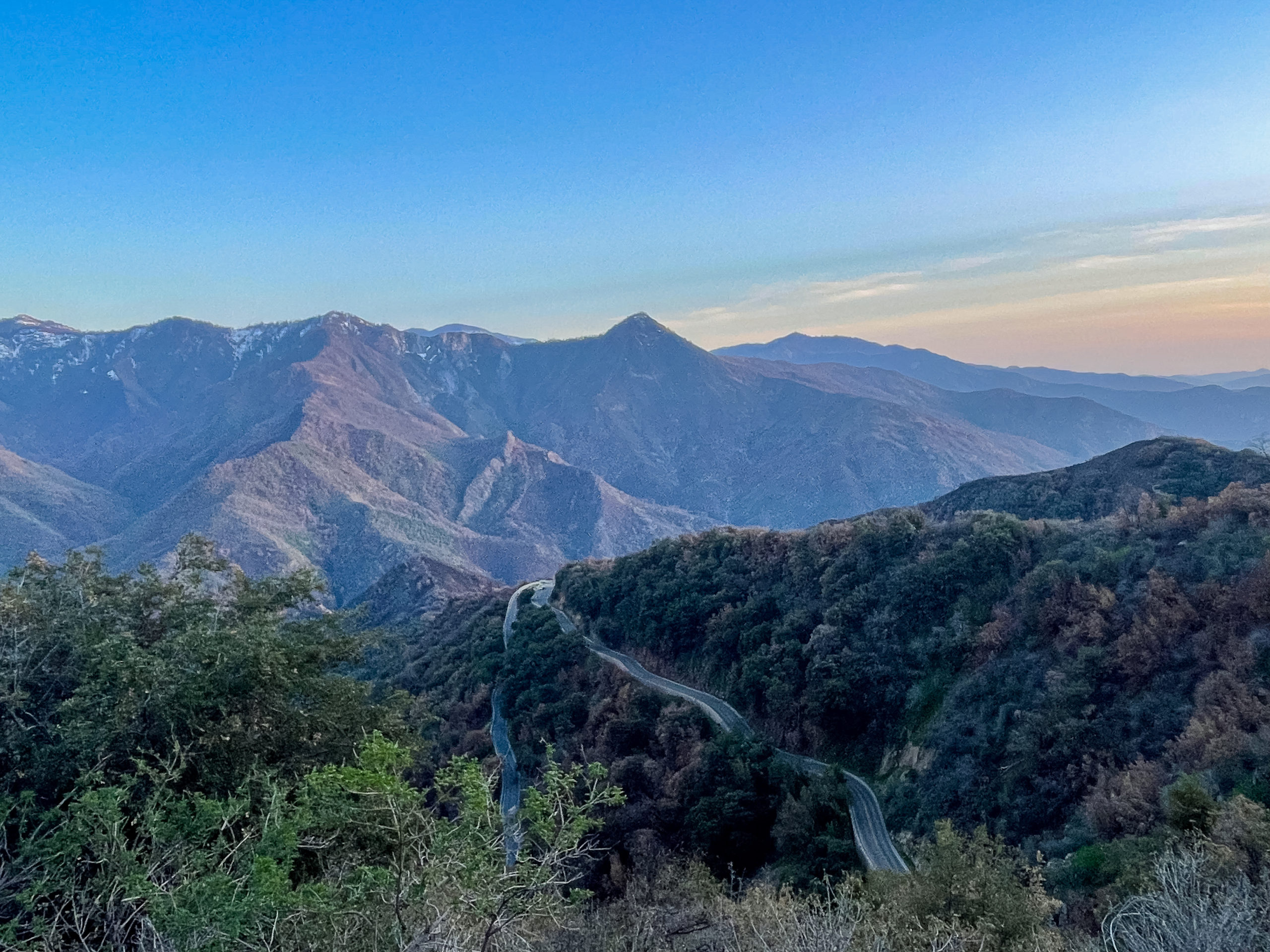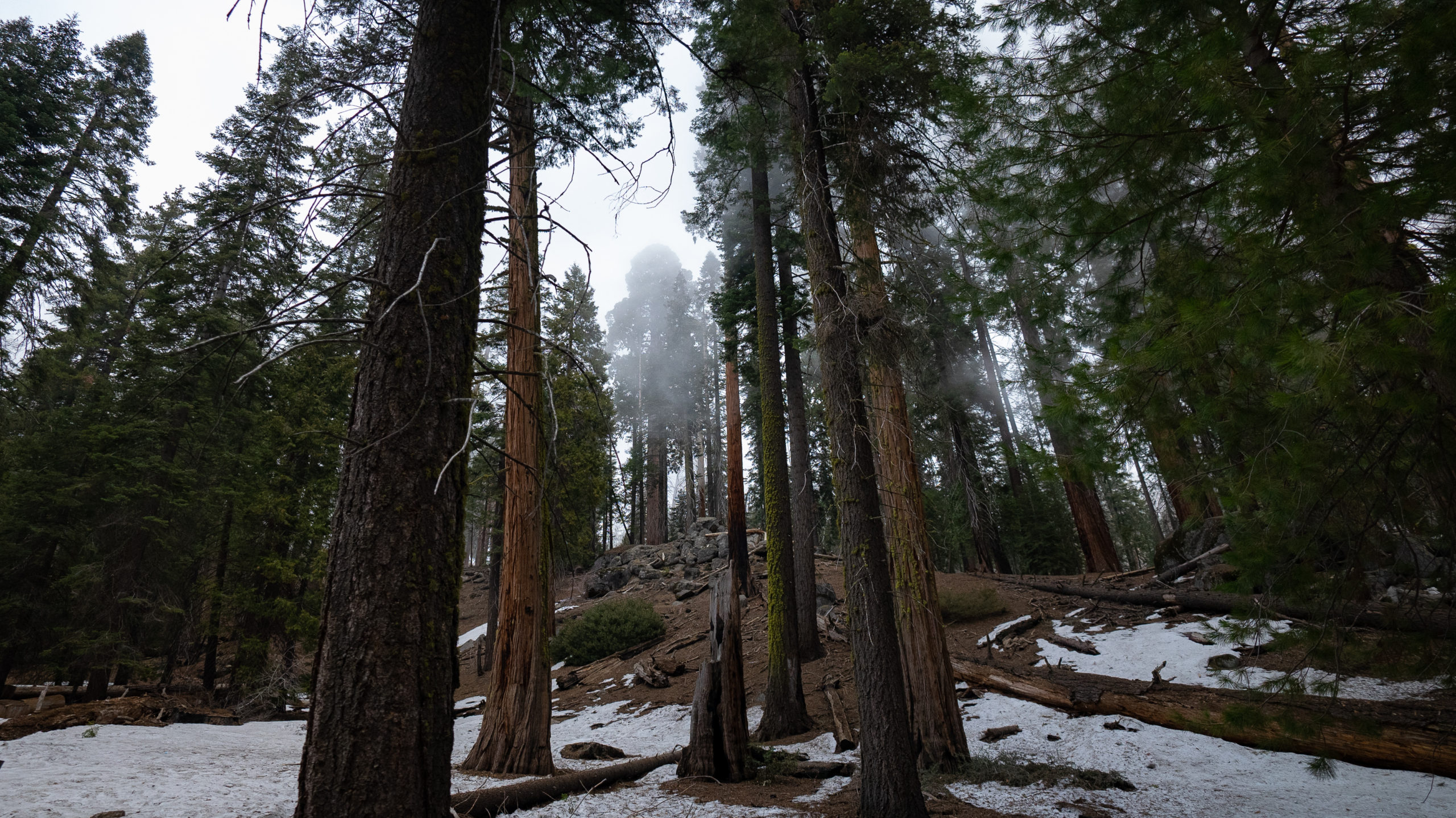Sequoia National Park Planning Guide
Home to some of the planet’s largest living trees, Sequoia National Park is an incredibly unique destination—one that undoubtedly deserves a spot on your bucket list! Let’s explore the ins and outs of this park with a complete Sequoia National Park guide for first-time visitors, long-time residents, and everyone in between.
Located in Southern California, this unforgettable destination offers countless opportunities for adventure and exploration. From hiking to backpacking, lodging, and logistics, here’s everything you need to know about one of the best national parks in California. I’ll also include some tips for visiting the nearby Kings Canyon National Park during your trip!
When you visit the beautiful Sequoia and Kings Canyon national parks to see those gorgeous trees and trails, always keep park rules in mind and commit to leaving no trace. Disclosure: this post may include affiliate links that generate a small commission for me (no cost to you) when you click and make a purchase.

Want to explore more of California and its national parks? I have lots of great resources for exploring these beautiful areas below.
How to Get to Sequoia National Park
Sequoia National Park is located near the town of Three Rivers, California, which is about a four-hour drive from Los Angeles. The closest airports to the park are Fresno Yosemite International Airport and Visalia Municipal Airport, both of which offer shorter drives (1-2 hours) but fewer flights. One of the reasons to visit Sequoia National Park is its proximity to another excellent national park in California: Kings Canyon National Park, located under 20 minutes away!
The Town of Three Rivers
Three Rivers is the closest community to Sequoia National Park and a great place to base yourself if you plan on spending a few days exploring the area. Here you’ll find several accommodations, including motels, lodges, and cabin rentals, as well as several dining establishments.
The 5 Regions of Sequoia National Park
Sequoia and Kings Canyon are divided into five distinct regions: Foothills, Cedar Grove, Giant Forest & Lodgepole, Mineral King, and Grant Grove. Here’s the Kings Canyon and Sequoia National Park guide on all five and what you need to know about exploring each.
1. Foothills
Located just inside the entrance to the park, the Foothills region offers a variety of hiking trails, picnic areas, and camping spots. Some of its most famous attractions include:
- Tunnel Rock: a natural arch formation
- Hospital Rock: the former site of a Native American settlement
2. Cedar Grove
Known for its countless waterfalls, cliffs, and rock formations, Cedar Grove is an excellent destination for hiking and backpacking within Kings Canyon National Park. Horseback riding and camping are also popular activities in this region.
3. Giant Forest & Lodgepole
Most famous for its sequoia trees, Giant Forest is where you’ll find the world’s tallest living tree: General Sherman. Undoubtedly, Giants Forest is the most popular region in Sequoia National Park and the one that you are likely to visit. With more than 8,000 trees, the area is home to the largest unlogged grove in Sequoia National Park. Here you’ll find five of the ten biggest trees in the world, including the largest, General Sherman. Measuring 275 feet in length and weighing an estimated 2.7 million pounds, General Sherman is quite a sight to behold!
The region offers several popular attractions, including:
- Moro Rock
- Tunnel Log
- Crystal Cave
- The Giant Forest Museum
4. Mineral King
Open from May to October, Mineral King is the highest car-accessible point in the park. Here you’ll find several hiking trails, tent-only campsites, and miles of rugged wilderness.
5. Grant Grove
Situated within Kings Canyon National Park, Grant Grove is home to the second largest tree in the world, General Grant. While hiking is the most popular activity here, the region also offers camping, picnicking, and horseback riding.
Things to Consider Before You Visit Sequoia National Park
There are several important logistics that you’ll want to keep in mind as you plan your trip to Sequoia National Park.
Services Are Limited
Several facilities are spread throughout the park; however, there is no guarantee that they will be open year-round. Visitor centers, campsites, and lodges have all been known to close at various times due to weather and fire concerns. Check the status of facilities before you visit and bring along any necessities you may need, like food and water. Cell phone reception is also limited in most of the park, so make sure to download maps and trail directions before entering the park.
Road Conditions Will Vary
While some roads are easily accessible, others may have steep grades with vehicle restrictions in place. Road closures are also common throughout the year, depending upon weather and fire concerns.
Check for National Park Updates
For the most up-to-date information on the park’s operational status, including park shuttles and parking availability, you can visit the national park’s website, mobile app, X (Twitter) page, or call them directly at +1 (559) 565-3341.
Traveling with Pets
If you are traveling with your dog into Sequoia National Park or Kings Canyon, please remember that dogs are not allowed on park trails unless specifically designated. Dogs are allowed in campgrounds and along roadways only. I love dogs, but sometimes, parks and pets don’t mix. If you plan to hike or go into the backcountry, please make arrangements for a kennel or dog sitter while enjoying the park.

The Giant Sequoia Trees of Sequoia National Park
Giant sequoia trees are so rare that they are only found in one place, and it’s right here along a 260-mile strip of Sierra Nevada’s western slope. Thriving between approximately 4,000-8,000 feet in elevation and varying in size, these gigantic sequoia trees can grow up to 300 feet tall and weigh more than 2 million pounds.
Within the Sequoia National Park, you’ll find approximately 40 groves of towering sequoias, some of which contain tens of thousands of these giant trees. It’s an incredible experience to feel so small under the canopies of these ancient trees.
The Best Hikes in Sequoia National Park
As an avid hiker, my Sequoia National Park guide has to include some of the best trails to explore during your visit! There are several hikes to choose from in the Giants Forest, the most popular region of Sequoia National Park. But after racking up several visits to the park, I’ve found that these are some of the best.
1. Hanging Rock Trail
This easy out-and-back trail is only half a mile long but offers incredible park views. The lookout spot is also home to a precariously balanced boulder that sits near the cliff’s edge.
2. General Sherman Tree Trail
To see the park’s most famous tree, set off down this easy half-mile trail that ends at the base of General Sherman. Along the way, you’ll encounter exhibits showcasing the forest’s natural history.
3. Giant Forest Loop Trail
If you’re interested in exploring the Giant Forest in full, then check out the Giant Forest Loop Trail. This easy seven-mile hike combines several of the park’s shorter hikes to provide an in-depth look at this incredible grove.
4. Tokopah Falls Trail
The Giant’s Forest is home to the park’s largest waterfall, Tokopah Falls. To view this 1,200-foot beauty up close, hike the Tokopah Falls Trail, a moderately challenging 4-mile out-and-back route.
What to Know About Fires in Sequoia National Park
Forest fires are a constant concern in the park and have been known to cause destruction and park closures. In recent years, high-density fires have resulted in the death of thousands of trees and led to months-long closures in some regions of the park. Given this, it’s essential to stay up-to-date and aware of any fire risks that may impact your trip and to follow all safety guidelines as the park releases them. Check current fires and statuses here.

The View from Moro Rock
The Best Attractions in Sequoia National Park
In addition to its incredible hiking, Giants Forest in Sequoia National Park is also home to several notable attractions. Creating this Sequoia National Park planning guide, I couldn’t leave out favorites like Moro Rock, Tunnel Log, and Lodgepole!
Moro Rock
Moro Rock is one of the most popular lookout spots in Giants Forest. Accessible by car, shuttle, or an easy half-mile hike, Moro Rock provides panoramic views of the entire park. The hike ascends a series of narrow stone stairs before coming to a spectacular summit that has some of the best views in the park.
Tip: If you have a fear of heights, you may want to skip this one.

Tunnel Log
Situated across Crescent Meadow Road, Tunnel Log is a fallen tree that has since been transformed into a tunnel. You can even drive under the tree on your way through the park when this area of road is open!
Lodgepole & Twin Lakes Area
Lodgepole is home to a Visitor’s Center where camping, hiking, and ranger-led programs are available. One of the best hikes in the area is out to Twin Lakes, which leads hikers to a pair of lakes that offer rural camping and fishing. Another hike in this area is to Tokapah Falls, accessible year-round. If you’re hiking in the winter, proper gear and route finding is required.
Backpacking in Sequoia National Park
Sequoia National Park offers more than 800 hiking trails, many of which can be explored on multi-day backpacking trips. For those interested in exploring these routes, the park provides wilderness permits that allow for dispersed camping.
Kings Canyon National Park Guide
Kings Canyon is another national park under 20 minutes from Sequoia National Park and administered jointly alongside it. Home to the regions of Grant Grove and Cedar Grove, this park offers miles of hiking, camping, and horseback riding. Let’s take a quick look at what you can expect in the park.
General Grant Tree
General Grant Tree is by far the most popular attraction in Kings Canyon. Towering 268 feet tall and weighing approximately 2 million pounds, General Grant is the second largest tree in the world.

Weather in Kings Canyon
The weather in Kings Canyon is known to vary greatly. With significant changes in elevation across the park, it’s possible to experience a bit of everything on any given day, including rain, sunshine, and even snow.
Big Stumps Trail
This 1.6-mile loop passes by the infamous big stump, also known as the Mark Twain Stump. Measuring 16 feet in diameter, this stump is all that remains of a massive tree that was once cut down and put on display worldwide.
Other Trails in Kings Canyon
- Zumwalt Meadow – Easy trail, 1.5-miles
- Panoramic Point – Easy trail, .5 miles
- Mist Falls – Moderate trail, 8.7 miles
- Big Baldy Ridge – Moderate trail, 6 miles
- Rae Lakes Loop – Backpacking trail, 39.1 miles

Plan Your Visit With This Sequoia National Park Guide
Giant trees, majestic waterfalls, stunning scenery, and unforgettable adventure—seriously, Sequoia National Park has it all! Whether you come in search of a relaxing escape in nature or a thrilling excursion into the wilderness, you’re sure to find it here and so much more.








This National Park looks so stunning, I would love to visit it when it’s snowing! Thanks, heaps for all your tips and recommendations.
I hadn’t realized how massive this park is. I would visit the sections of Cedar Grove for its waterfalls, cliffs, and rock formations, then the sequoia trees of Giant Forest to see the tallest living tree.
I still can’t believe I grew up in California and never visited!
This is such a great guide! I cannot wait to visit the south of California and the Sequoia National Park.